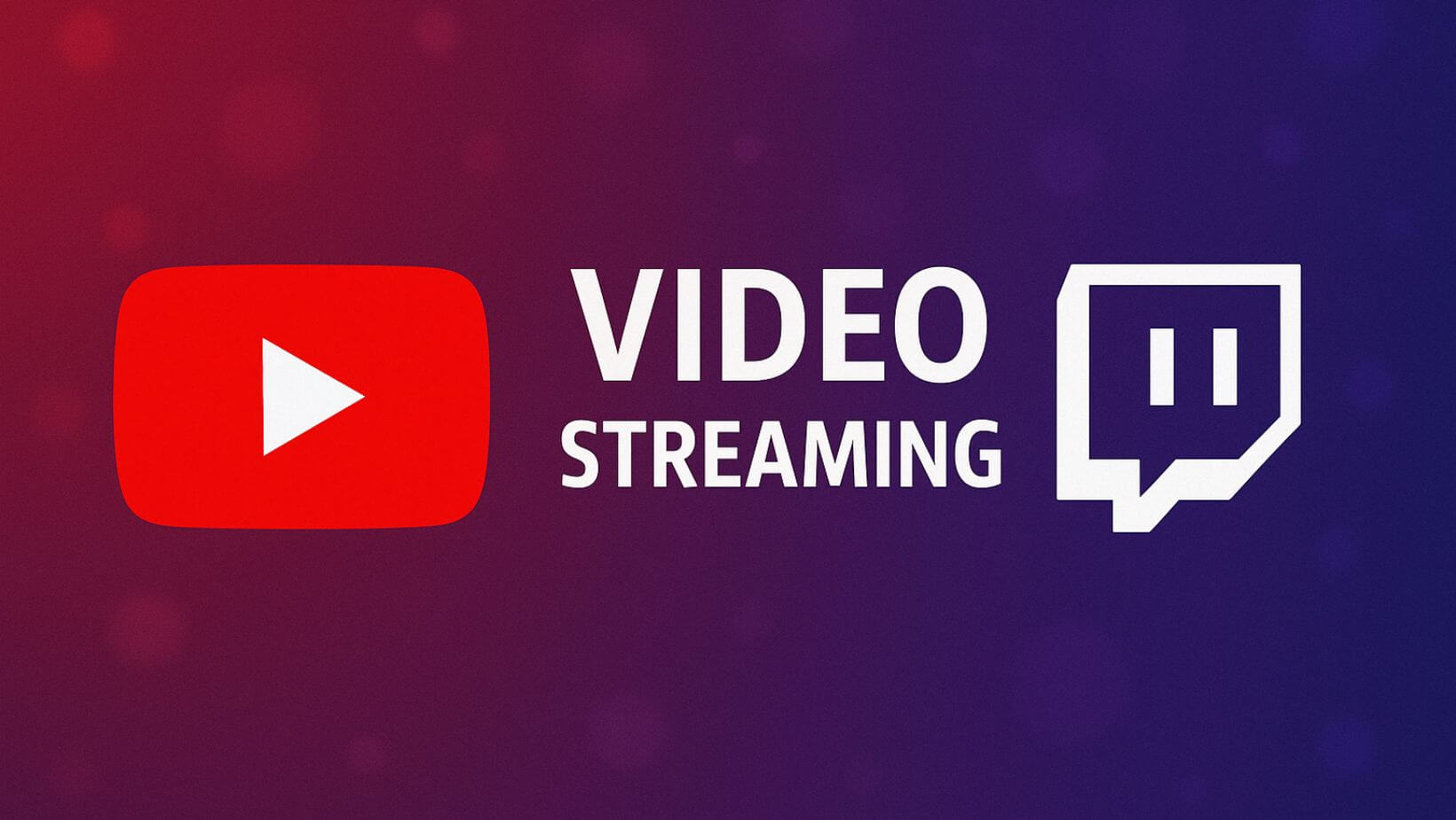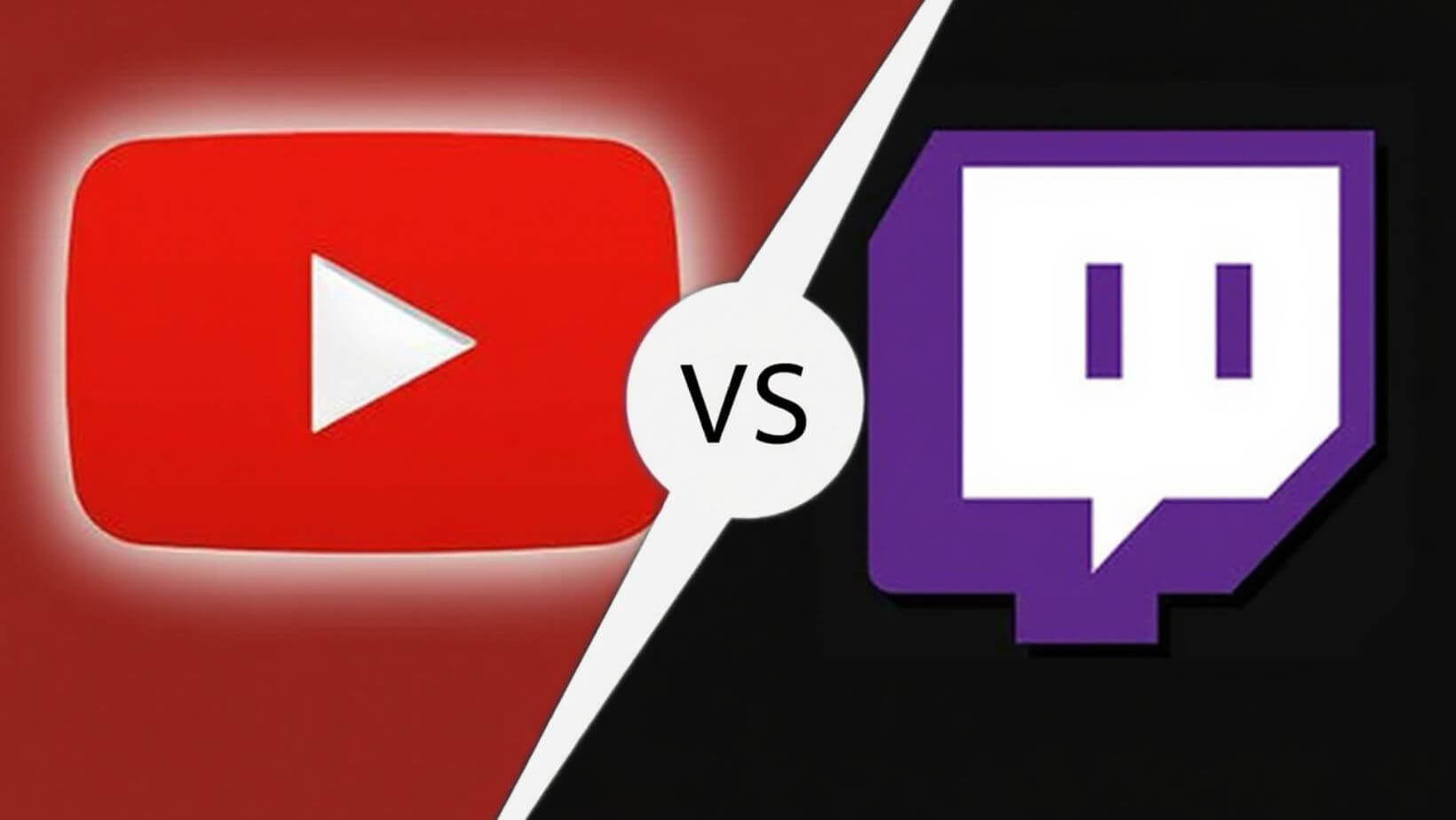Trying to figure out where to pour your energy as a streamer: YouTube or Twitch? Which one’s actually going to help you grow faster, earn more, or build something lasting? If that’s you, let’s go!
We’ve worked with thousands of creators, navigating the exact same crossroads. This article is a strategic breakdown to help you build a better streaming setup, one that aligns with your goals.
YouTube vs Twitch: A Creator’s Live Streaming Showdown
Both YouTube and Twitch can be the best streaming platforms for you, depending on your goals.
Audience Size vs Audience Engagement
Twitch has about 35 million people tuning in daily, and on average, around 2.5 million viewers are watching something live at any given moment. That’s solid engagement, especially for creators who thrive in real-time interaction.
YouTube, though, has over 2.5 billion logged-in monthly users. So even though YouTube Live might not have the same live-only culture as Twitch, the sheer scale of the platform gives creators way more potential reach.
Discoverability: Why YouTube Might Give You an Edge
One of the biggest differences between YouTube and Twitch streaming is how new viewers find your live content. Discoverability can make or break a stream, and here, YouTube has a clear advantage. You’re already familiar with YouTube’s search and recommendation system; the same algorithm that helped your past videos gain views over time works for live streams too. YouTube treats live streams as fresh content and often pushes them to viewers via recommendations and search. This means your YouTube live streaming sessions can attract new viewers even if they didn’t know you beforehand.
For example, if you stream a trending game or topic, YouTube’s algorithm might surface your live feed on the homepage or “Up Next” suggestions, something Twitch’s category pages can’t easily replicate.
YouTube's share of total live-stream watch hours has been growing (from about 17% to over 23% recently) as more viewers tune into YouTube Live, a sign that discoverability on YouTube Live is paying off.
Starting From Scratch: Why Twitch Can Be Tougher
Twitch, by contrast, relies on a more old-school directory approach. Viewers usually have to scroll through game categories or already know about your channel to find you. If you’re not already a top streamer in a category, you might be buried at the bottom of a long list.
Streaming on Twitch without an established audience can feel like trying to be heard in a stadium full of shouting people. That said, Twitch remains the biggest live streaming hub with a passionate audience of gaming fans.
So while Twitch’s discovery might be tougher for newcomers, your existing YouTube community could give you a head start if you direct them to your Twitch streams.

Community and Engagement: Live Culture on Twitch vs. YouTube
Twitch made streaming mainstream. It was never just a platform. It was a culture. From raids (sending your viewers to another channel) and emotes to chat-driven chaos, Twitch is optimized for one thing: live engagement. It still dominates in that category, especially for gaming, commentary, and real-time audience interaction.
Twitch built its reputation as the go-to live streaming platform, and it shows in its culture and tools. Chat on Twitch moves fast with custom emotes and inside jokes, making viewers feel like part of a tight-knit community. Features like raids and hosting create a network effect that keeps people engaged and discovering new creators.
All this makes Twitch great for community building, fans often stick around as much for the community vibe as for the content.
YouTube’s live streaming is still catching up to Twitch when it comes to community features. However, YouTube’s engagement tools are already quite powerful: membership badges, custom emotes, and Live Redirects (raids) are available to boost interaction.
Monetization: Different Paths to Earning on YouTube and Twitch
On YouTube, once you’re in the Partner Program, you can monetize live streams with ads, channel memberships, Super Chats, and more. A big plus is that your live streams can continue earning ad revenue as videos after you go offline. YouTube also offers a split for fan funding (you keep 70% of memberships and Super Chats).
On Twitch, monetization options revolve around live interaction – subscriptions, Bits (virtual tips), and ads. Twitch’s Affiliate program is much easier to join (just 50 followers and a few streaming hours), so you can start earning sooner.
However, Twitch subs usually split 50/50 with the platform, and Bits are roughly a penny each, so the payout per supporter can be lower. But if you become a Twitch Affiliate or Partner, you agree not to multistream to other platforms simultaneously.
In other words, you can’t stream to YouTube and Twitch at the same time once you’ve enabled Twitch monetization features, due to this exclusivity clause.
In short, YouTube has a higher bar to start monetizing but rewards you with better revenue splits and ongoing VOD income, while Twitch lets you monetize earlier with community support (Prime and gift subs, etc.) but ties you to their platform.
We help creators weigh these trade-offs every day. Join ScaleLab for expert guidance on maximizing your earnings on both platforms.
24/7 Streams and Always-On Content
Have you noticed those channels that stream content nonstop? It’s a growing strategy, especially on YouTube. The idea is simple: loop pre-recorded videos as a continuous live stream. YouTube’s algorithm treats an ongoing stream as constantly “new” content, helping keep your channel active in recommendations.
Lots of creators report that the majority of their revenue or subscriber growth now comes from these always-on streams. After all, you can attract viewers (and Super Chats or ad views) even while you sleep.
On Twitch, 24/7 streams exist (think reruns or community cam streams), but Twitch’s platform doesn’t boost them in the same way. Still, always being live on Twitch can slowly build followers, especially if you fill a niche where viewers know they can drop in anytime.
Creators also use YouTube’s 24/7 streaming options to monetize around the clock on both platforms. Run loops of your most engaging content, and your revenue doesn’t stop when you log off.
Setting up a 24/7 stream does take some technical work, but that’s where we can help. If you’re intrigued by the idea of an always-on broadcast, contact us and we’ll help you get it up and running smoothly.

Multi-Streaming: Why Both Platforms?
Multistreaming, broadcasting to Twitch and YouTube simultaneously, is a good choice to make. When you go live on both platforms, you combine each one’s strengths. You tap into YouTube’s algorithm and vast audience reach while also engaging with Twitch’s live community. You let fans watch on whichever platform they prefer, and you double up your exposure and monetization opportunities without doubling the effort.
For example, TheTechnoTed, a gaming creator, streams concurrently on Twitch and YouTube to maximize his audience – some viewers catch him on YouTube while others join on Twitch.
Another creator, Ravtek, uses YouTube for polished game lore videos and then multi-streams his live gameplay discussions on both platforms, leveraging YouTube for discoverability and Twitch for real-time engagement.
One creator we supported went from 12 to 40k subscribers in six months simply by adding YouTube Live to their Twitch routine, then repurposing live clips into Shorts. Thanks to this, their community has become much larger.
These approaches show that you don’t have to choose one platform over the other; you can truly use both in tandem.
But Twitch’s terms say that if you’re an Affiliate or Partner, you’re not allowed to multistream to a competing platform like YouTube simultaneously. Many smaller streamers still do it at the affiliate stage, but it’s technically against the rules.
Using both platforms (whether by alternating streams or true multistreaming) can significantly expand your reach.
So, YouTube, Twitch, or Both?
It depends on your starting point and your goals.
Are you a YouTuber expanding into live?
Then streaming on YouTube keeps your content under one roof. You keep algorithm favor, cross-promote across formats, and strengthen your existing subscriber base.
Are you a gamer who thrives on chats and daily interaction?
Then Twitch live streaming offers an unmatched sense of immediacy and cultural fluency.
Starting fresh with no platform loyalty?
Then stream to YouTube and Twitch at the same time.
Why You Shouldn’t Have to Choose
The "Twitch vs YouTube" conversation often misses the most obvious solution: do both. Tools like Gyre let you run pre-recorded content as 24/7 streams. There’s zero reason to force yourself into one box.
Yes, Twitch and YouTube each have exclusivity clauses at higher partner levels. But until you’re there, you should absolutely be experimenting.
More platforms = more data = better decisions.

Streaming on Twitch vs YouTube Is a Strategy
You don’t need to choose one over the other. You can use both platforms together. YouTube offers discoverability and a vast audience base for live streams, while Twitch provides that unique live community vibe and real-time engagement. If you limit yourself to only one platform, you might be leaving behind opportunities that the other could provide.
And you don’t have to navigate this cross-platform journey alone. Join ScaleLab and you’ll become part of creators who are pushing boundaries on both platforms.
